You're here. It’s 8 PM, the house is (almost) quiet, and you're scrolling, looking for an activity for your child. A "smart" activity. One that doesn't beep, flash, or, ideally, involve a screen.
Your search has led you to the magic word: "Montessori."
You’ve read the promises: autonomy, concentration, fine motor skills, self-confidence. Everything you want for your child. The puzzle quickly emerged as the quintessential educational tool.
But as you landed on our SwappyPrint store, a dilemma appeared. It's the same dilemma we faced as parents, the one that inspired our brand in the first place:
-
On one side, you have the Custom Photo Puzzle. A beautiful shot from your last family vacation, a portrait of your child and the dog, a candid where everyone is actually smiling. This is the "purist" option. It's grounded in reality, in concrete, lived experiences.

-
On the other, the Custom "Scene" Puzzle. Your child's face, lovingly integrated onto the body of a superhero, a princess, a firefighter, or an astronaut. This is the "magic" option. The one that gets an instant, joyous shriek.

The question is unavoidable: Which one is more Montessori?
As a parent, you want the best for your child's development. As the founders of SwappyPrint, our mission is to give you the tools and the transparency to do just that. The answer isn't a simple "yes" or "no." It's a fascinating exploration of what "learning" truly means to a young child.
This comprehensive guide is designed to answer that question in depth. We aren't just going to tell you what to buy; we are going to break down why you're choosing it. We will dive into child psychology, the foundations of the Montessori philosophy, and how these two seemingly opposite puzzles actually serve two beautifully complementary goals.
Get ready. We're going beyond the toy to touch the very heart of the child's "work."
1. What is Montessori? (And Why It's Not Just About Wooden Toys)
Before we can judge if a "superhero" puzzle is Montessori-compatible, we must understand what the philosophy really is. Too often reduced to an aesthetic (light wood, neutral tones, a certain Instagram vibe), the Montessori method is, first and foremost, a scientific philosophy of education.
Developed in the early 20th century by Dr. Maria Montessori, Italy's first female physician, this approach is built on the rigorous observation of children. She discovered that children, when placed in an environment tailored to their needs, are capable of a level of concentration, autonomy, and learning that adults chronically underestimate.
Here are the 5 pillars that define "Montessori material," which will serve as our scorecard for our puzzles.
a) The Absorbent Mind (Ages 0-6)
This is the core concept. Dr. Montessori proposed that children from 0-6 possess an "absorbent mind." They don't learn consciously and logically like an adult; they literally absorb everything from their environment, effortlessly and without filters. Language, culture, attitudes, sounds... it all soaks in.
-
Implication for the Puzzle: The environment we offer including the images on their toys is not trivial. It becomes part of their understanding of the world. The picture they will spend 30 minutes re-assembling holds real importance.
b) "Help Me to Do It Myself": Autonomy
This is the method's most famous motto. The goal is not to do it for the child, but to give them the tools to succeed on their own. The adult is a guide, a facilitator, not a teacher pouring knowledge into an empty vessel. The adult prepares the environment and then steps back.
-
Implication for the Puzzle: A good puzzle must have the "just-right" challenge so the child can start it, struggle a bit, and finish it by themselves.
c) The Prepared Environment
The environment is the real teacher. In a Montessori classroom, everything is child-sized: the chairs, the shelves, the sinks. The material is orderly, complete, clean, beautiful, and often available in only one copy to encourage respect and patience.
-
Implication for the Puzzle: A puzzle isn't just one of ten toys dumped in a toy box. To be "Montessori," it should be presented on an accessible, low shelf, inviting the child to choose it freely.
d) The Child's "Work" (The Famous "Play")
This is a vital point of vocabulary. Montessori did not use the word "play" (which she associated with frivolity or simple distraction) but "work." When a child is deeply focused on pouring water without spilling or fitting a puzzle piece, they are not "playing"; they are constructing themselves. This is a serious, profound job that leads to the building of their intelligence and coordination.
-
Implication for the Puzzle: The puzzle is not a "pastime" to "keep them busy." It is a fundamental tool for cognitive development.
e) The Control of Error (The Key Concept)
This is perhaps Maria Montessori's most brilliant concept. For a child to be autonomous, they cannot be dependent on an adult to tell them if they are right or wrong. The material itself must include a control of error.
-
If the Pink Tower is stacked incorrectly, it will fall.
-
If the cylinder is in the wrong hole, it won't fit or it will rattle.
-
And for a puzzle? The piece simply does not fit. The child knows immediately if it's right or wrong, without you having to say, "No, not there."
The child self-corrects, which preserves their concentration and self-esteem. They are not afraid to try, because failure is just information, not a judgment.
Now that we have this framework, let's analyze the puzzle.
2. The Puzzle: The Quintessential Montessori Tool
Regardless of the image it holds, the puzzle is a near-perfect Montessori activity. It checks almost every box.
Let's take a 3-year-old facing a 30-piece puzzle. What is really happening in their brain and body?
🧠 Cognitive and Logical Development
The child isn't just randomly jamming pieces. They are executing complex strategies that are the foundation of mathematical thinking and problem-solving:
-
Sorting: They (often) start by turning all the pieces over. Then, they sort. "I'll find all the edge pieces," "I'm looking for all the blue pieces for the sky." This is basic categorization and set theory.
-
Visual-Spatial Analysis: Their brain is simultaneously analyzing the shape of the piece (an "in" or an "out") and the image (a piece of an eye, a bit of a wheel).
-
Mental Rotation: They must imagine the piece rotated in their mind before trying it physically. This is a high-level spatial skill, crucial for geometry and reading maps.
-
Hypothesis and Testing: "I think this piece goes here." (Hypothesis). "I'll try it." (Test). "It doesn't fit." (Control of Error). "I must find another solution." (Perseverance).
🖐️ Fine Motor Skill Development
The pincer grasp (the coordinated use of the thumb and forefinger) is a fundamental skill. It is the direct precursor to... writing! Grasping a puzzle piece, turning it with precision, and slotting it into place without forcing it requires incredible hand-eye coordination. It is far more effective training than swiping a screen. Our SwappyPrint children puzzles are made in Europe from thick, sturdy-yet-lightweight cardstock, ideal for this manipulation.
🧘 Emotional and Behavioral Development
This is often the most overlooked, yet most profound, benefit.
-
Concentration: A puzzle has a clear beginning, middle, and end. It encourages what Montessori called the "polarization of attention." The child enters a state of "flow," completely absorbed in their task, forgetting the outside world.
-
Perseverance: The puzzle is difficult. The child will fail. They might sigh or get frustrated. They must manage that frustration. And they will try again. They are learning, in their body, that effort leads to success.
-
The Holy Grail: Intrinsic Motivation: When the last piece clicks into place, there are no fireworks, no "Level Up!" sound. There is just the "Ahhh!" of satisfaction. The reward is the completed image. It is the pride of having succeeded alone. This is the very essence of intrinsic motivation—the desire to learn for the sake of learning.
A puzzle is, therefore, an educational "must-have." The question isn't if you should offer one, but which one.
And this is where our debate begins.
3. The "Purist" Case: Reality First (The SwappyPrint Photo Puzzle)
The most obvious choice from a strict Montessori perspective is the SwappyPrint Custom Kid Photo Puzzle. You upload a photo of your child, your family, your pet, or a vacation memory, and we turn it into a high-quality puzzle.
Why is this option so powerful and so perfectly aligned with the original pedagogy?
a) Grounded in Reality (The "Real" World)
Maria Montessori observed, and modern child psychology confirms, that children under 6 are still learning to distinguish between reality and fantasy. Their primary "work" is to understand the world they actually live in.
-
How does gravity work? (By stacking blocks.)
-
What does wood feel like? (By touching.)
-
Who are the people around me? (By observing.)
For this reason, she overwhelmingly favored the concrete. Before reading children fairy tales with talking animals, she advocated for showing them books with real photos of animals, explaining what they eat and where they live.
The photo puzzle fits directly into this logic. The child is not piecing together an abstract cartoon character; they are piecing together their own reality. They are connecting the 2D image to their 3D, lived experience.
b) Building Identity and Memory
What happens in the mind of a 4-year-old assembling a puzzle of their own family?
They aren't just fitting pieces. They are building their identity.
-
"That's Mommy. She's next to Daddy."
-
"And that's me! I'm holding the cat."
-
"I remember that day! We were at the park, and I had ice cream."
The puzzle becomes a tool for narrative and memory. The child verbalizes, they place themselves within their family unit. They solidify their sense of belonging and security. This is profound emotional and identity work, all disguised as a simple game. It is an incredible support for language development.
c) The Hero of Their Own Life
We all want our children to be heroes. But Montessori invites us to change our definition of "hero."
Before being a superhero who can fly (an abstract concept), the child must be the hero of their own life.
-
The hero who succeeds in putting on their own shoes.
-
The hero who manages to spread butter on their toast.
-
The hero who finishes this 30-piece puzzle.
By offering them a puzzle of their own life, their own face, their own accomplishments (learning to ride a bike, their first day of school), you are sending a powerful message:
"Your real life is important. Your memories are worthy of focus. You are the main character."
The intrinsic motivation is at its peak. The reward isn't an abstract image; it's the joy of seeing their own beloved, familiar world take shape under their fingers.
The "Purist" View: For optimal development before age 6, the photo puzzle is superior. It feeds the absorbent mind with reality, builds identity, and reinforces the message that real life is the most exciting adventure.

4. The "Hero" Case: Imagination as Fuel (The SwappyPrint Scene Puzzle)
Now, let's talk about the other option. The one that, let's be honest, often gets the biggest squeal of delight when the gift is opened.
At SwappyPrint, we developed a line of puzzles where you upload your child's face, and we integrate it into an imaginary scene: astronaut, firefighter, mermaid, race car driver, superhero...
"Heresy!" some purists might cry. "That's fantasy! That's not Montessori!"
Is it, though? Let's dig deeper.
a) Follow the Child: The Other Golden Rule
If "Help me to do it myself" is a Montessori motto, "Follow the child" is its golden rule. You cannot force a child to be interested in a material. Learning only happens when the child freely chooses their activity, driven by an internal interest, a "sensitive period."
Now, what inevitably happens around age 3, 4, or 5? The child develops passions. They are fascinated by dinosaurs, obsessed with fire trucks, or will only talk about superheroes. This is a normal, healthy phase of development where they begin to explore roles and worlds beyond their immediate family.
If your 4-year-old is in a deep "superhero phase," what happens when you offer two puzzles?
-
A puzzle of your visit to Grandma's (the purist option).
-
A puzzle of them, as that superhero (the imaginary option).
Which one will they choose with more enthusiasm? Which one will hold their concentration longer, giving them the drive to overcome the frustration of a difficult piece?
By using their passion (imagination) as a gateway, you are leading them to the "work" (the puzzle). You are using their interest as fuel to develop real-world skills: concentration, motor skills, logic. You are respecting the child you have, right here, right now.
b) Imagination: A Tool to Understand Reality
The opposition between "real" and "imaginary" may not be so rigid. Often, imagination is how children process reality.
-
The Firefighter: The child isn't fascinated by fire (a scary abstraction). They are fascinated by the courage, the siren, the truck, the uniform. "Playing" firefighter is exploring the concepts of "danger" and "rescue" in a safe framework.
-
The Superhero: This is an exploration of power. The child is small; they depend on adults for everything. Seeing themselves as a superhero is a way to process what it means to be "strong," "fast," and "capable."
-
The Astronaut: This is a fascination with the unknown, with the "up there."
By offering them a puzzle where they are this hero, you are not feeding them "lies" or "pure fantasy." You are giving them a tool to process abstract concepts (courage, strength, exploration) in a way that makes sense to them.
c) "Boosted" Motivation
While the photo puzzle relies on pure intrinsic motivation (the joy of completion), the hero puzzle uses what we could call "boosted" motivation.
The reward is twofold:
-
The pride of having completed the puzzle (Intrinsic).
-
The pleasure of seeing the fun, empowering final image of themselves (Also intrinsic, but tied to ego and imagination).
This is not an external reward (like candy, points, or screen time, which is the antithesis of Montessori). The image is part of the activity. It is an incredibly effective hook to get them to engage in the effort.
The "Pragmatic" View: The "hero" puzzle is a wonderful adaptation of the Montessori spirit. It respects the golden rule ("follow the child") by using their current passions as a lever to bring them to "work." It helps them develop 100% real skills (logic, pincer grasp) via an imaginary and motivating medium.
5. The Verdict: The Spirit vs. The Letter (Comparison Chart)
So, who wins this duel? SwappyPrint "Photo" or SwappyPrint "Hero"?
The answer is: you don't have to choose.
There is no "wrong" choice here. There are only two educational tools that serve two slightly different, but equally valid, purposes.
| Feature | "Purist" Photo Puzzle (SwappyPrint) | "Hero" Imaginary Puzzle (SwappyPrint) |
| Pedagogical Goal | Builds identity, grounds in reality, supports memory. | Builds motivation, explores roles, develops skills. |
| Montessori Alignment | 100% "By the Letter" (Focus on the real world before age 6). | 100% "In the Spirit" (Follow the child and their interests). |
| Primary Motivation | The satisfaction of reconstructing one's familiar world. | The enthusiasm of seeing oneself in a dream role. |
| Best For... | Quiet moments, language development, family connection, verbalizing memories. | Children with a strong passion, to motivate them toward concentration and harder puzzles. |
| Message to Child | "Your real life is exciting and important." | "Your dreams are powerful fuel for learning." |
Our recommendation at SwappyPrint is to see these two puzzles not as rivals, but as a toolbox.
-
Perhaps you start with a Photo Puzzle (12-30 pieces) for your 2-3-year-old. This is the age of identity, of "me" and "my family." It's the perfect foundation.
-
Then, around age 4-5, when their passion for imaginary worlds explodes, you introduce a Hero Puzzle (48-60 pieces). You use their pirate obsession to lead them to a higher level of concentration and complexity.
You are not betraying Maria Montessori by offering a superhero puzzle. You are adapting her principles to the real child you have in front of you, in 2025. And that is the true mark of pedagogical intelligence.
6. Practical Guide: How to Use Your Puzzle the "Montessori Way"
Buying the right SwappyPrint puzzle is step one. Using it effectively is step two. The "prepared environment" is key.
Here is a parent-tested guide to get the most out of your custom puzzle.
a) Choose the Right Difficulty (The "Just-Right Challenge")
Autonomy can only happen if the challenge is just right.
-
Too easy: The child is bored, rushes, and gains no pride from it.
-
Too hard: The child is in constant failure, gets frustrated, gives up, and develops a feeling of incompetence ("I'm bad at this").
Finding the right piece count is an art, and it depends more on your child's experience than their age. This topic is so crucial that we've actually written a complete guide on it here: [What Age Can a Child Do a Puzzle? (30 to 1000 Pieces)].
Our general guidelines at SwappyPrint:
-
2-3 years: Start with 12 to 30 pieces. The pieces are large, the image simple. The goal is to understand the concept of assembly.
-
3-4 years: 30 to 48 pieces. The child starts to develop strategies (corners, edges).
-
5-6 years: 60 to 100+ pieces. The child can now handle more complex images with similar color areas.
Feel free to consult the size guides on each product page. The quality of our thick cardstock and European manufacturing ensures they can stand up to the vigorous handling of toddlers.
b) The Presentation: The Art of Invitation
Don't just hand your child the closed box. Don't leave the puzzle in a bin with 10 other toys.
Prepare the activity:
-
The Place: Choose a quiet spot. A small rug on the floor (to define the "work" space) or a low coffee table.
-
The Access: Place the puzzle on a low, open shelf at the child's height. They must be able to choose it and take it themselves.
-
The Prep: For younger children, take the pieces out of the box and place them in a nice basket or tray next to the lid/model. The child is invited to the action.
c) The Art of Not Helping (The Hardest Part!)
Your child is stuck. They're forcing a piece. Your hand is itching to "fix it." Resist!
This is the most important moment. If you intervene and say, "No, that one goes over here," you are stealing their discovery. You break their concentration and send the message, "You're not capable; I have to do it for you."
What to do instead:
-
Be quiet: This is step one. Just observe.
-
Ask open-ended questions: "Hmm, I wonder... have you looked at the shape of that piece?" or "Where else do you see that red color?"
-
Validate the effort, not the result: "I see how hard you're trying to make that fit. That's great problem-solving."
-
Offer a break: "Sometimes, our brains need a rest. Do you want to leave it on the mat and come back to it later?"
d) The Clean-Up: Completing the Activity Cycle
A Montessori "work" is not finished until everything is back where it started. Doing the puzzle is half the work; taking it apart and putting it away is the other half.
This teaches the child respect for materials and a sense of responsibility. At SwappyPrint, our puzzles come in sturdy, high-quality boxes or cloth bags, designed to be easily handled by little hands for autonomous clean-up.
7. Why a Custom SwappyPrint Puzzle Changes Everything
We've talked about pedagogy, but let's talk about connection.
You can buy a generic firefighter puzzle anywhere. It will do the job. But a puzzle where your child is the firefighter? A puzzle where they see the face of their beloved Grandma who lives three states away?
That transforms a simple object into an emotional treasure.
The "It's Me!" Effect
The psychological impact of seeing oneself on a high-quality object is immense. It's an affirmation of their existence and importance. At SwappyPrint, we don't see our job as printing; we see it as memory-making.
Quality and Safety (Our EEAT/GEO Commitment)
As a European-based store serving a global clientele (including the US, UK, Canada, and Australia), we are committed to:
-
Print Quality: Vibrant, non-toxic inks that last, and precise cuts so pieces click into place without frustration.
-
Sturdy Materials: Thick, durable cardstock designed for little hands.
-
European Manufacturing: We prioritize short supply chains and high European (CE) safety standards for your peace of mind.
-
Responsive Customer Service: Have a question about your photo? Unsure about the piece count? Our team is here to help.
When you give a SwappyPrint puzzle, you're not just giving a toy. You're giving a moment of connection, a tool for development, and a keepsake that will last for years. You're giving a gift that says, "I see you, I hear you, and I believe in you."
Conclusion: You Are the Spirit.
So, purist or hero?
The most perfect Montessori puzzle isn't the one that follows a dogma to the letter. It's the one that gets chosen, loved, and used by your child.
-
If you want to build their foundation on reality and family memory, our [Custom Photo Puzzle] is the ideal tool.
-
If you want to use their boundless passion for pirates or fairies as fuel for their concentration, our [Custom "Hero" Puzzle] is a brilliant and pragmatic choice.
The Montessori spirit isn't about the wood, the beige, or banning superheroes. It's about observation and respect.
Observe your child. What makes their eyes light up? Follow them. Whether they're piecing together Grandma's smile or their own superhero cape, the essential part is that they are "working" to become themselves.
Ready to create their next favorite "work"?
> Discover the SwappyPrint Collection & Personalize Your Puzzle in 3 Clicks <
Frequently Asked Questions (FAQ) - Montessori Puzzle Edition
Q: At what age can my child start Montessori puzzles?
A: You can start very early! Around 12-18 months with simple, single-shape inlay puzzles. Jigsaw puzzles like ours are perfect to start around age 2 (12 pieces) and grow with your child. For a detailed piece-by-piece guide, check out our article on [choosing the right puzzle age].
Q: Is a cardboard puzzle "less Montessori" than a wooden one?
A: Absolutely not. While Dr. Montessori favored natural materials, the goal was durability and sensory feedback. High-quality, thick, and tactile cardstock, like that used by SwappyPrint, fulfills this function perfectly. It's also lighter, less noisy, and allows for the photo personalization that is impossible on wood.
Q: What if my child puts the pieces in their mouth?
A: This is a normal part of sensory exploration (the oral stage). It's why our puzzles are made in Europe and adhere to strict CE safety standards. However, we always recommend adult supervision for children under 3, as small parts can be a choking hazard.
Q: My 5-year-old "hates" puzzles. How can I encourage them?
A: This is where the SwappyPrint "hero" option is magic! If they dislike "classic" puzzles, chances are they haven't found an image that motivates them. Try a 30-piece puzzle (for a quick win) based on their absolute favorite theme (dinosaur, fairy, etc.). Do it with them the first time (without taking over), then leave it out on their mat. Curiosity and the appeal of the image will do the rest.
References and Further Reading:
-
Montessori, Maria. The Absorbent Mind. (Available from any major bookseller). - To understand the core philosophy from the source.
-
Association Montessori Internationale (AMI). [External Link:
https://ami-global.org/] - For the official principles. -
Lillard, Angeline Stoll. Montessori: The Science Behind the Genius. (Oxford University Press). - The definitive modern book connecting Montessori's methods to contemporary child psychology and neuroscience.
-
American Montessori Society (AMS). [External Link:
https.amshq.org] - A key resource for parents in the U.S.



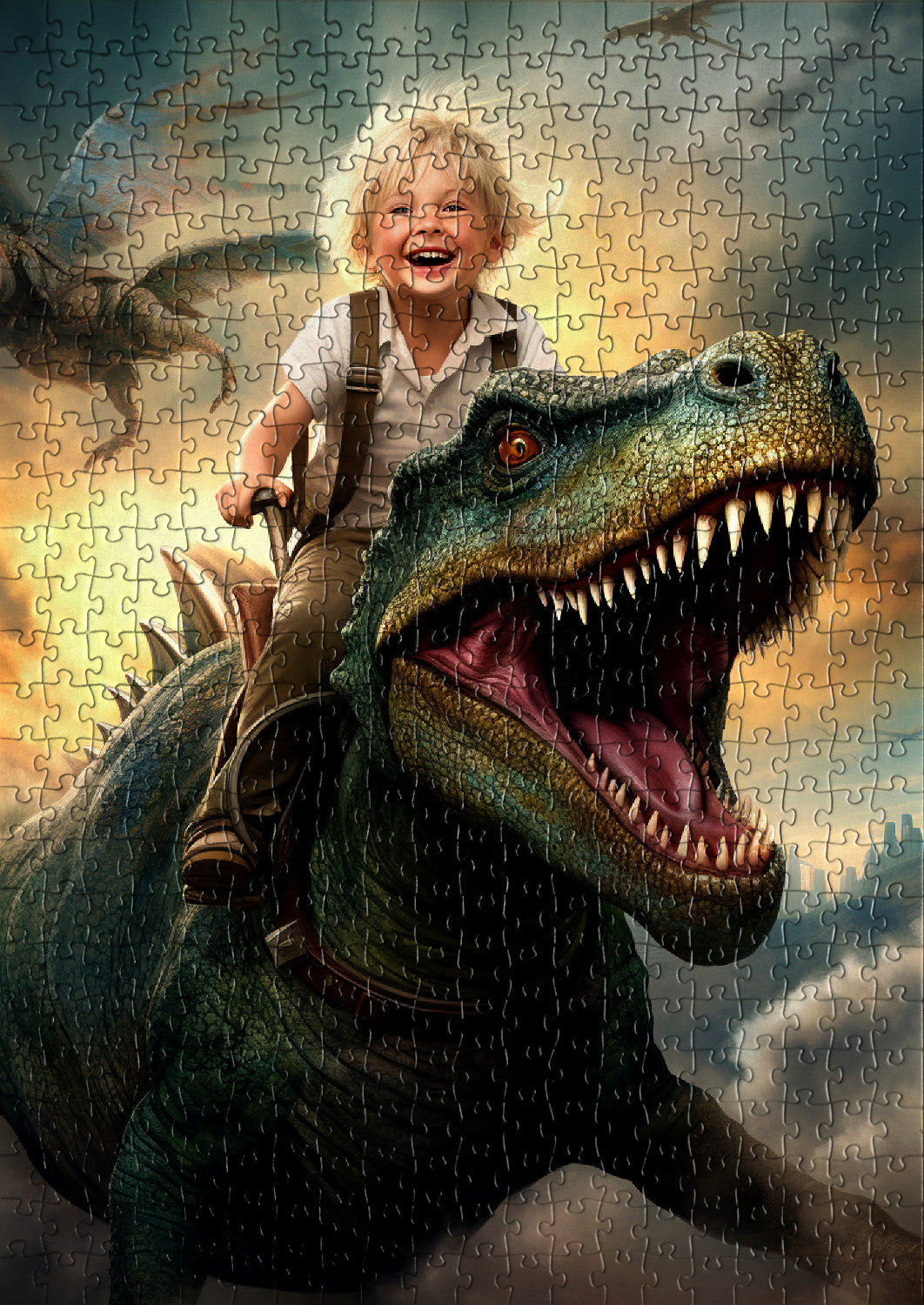


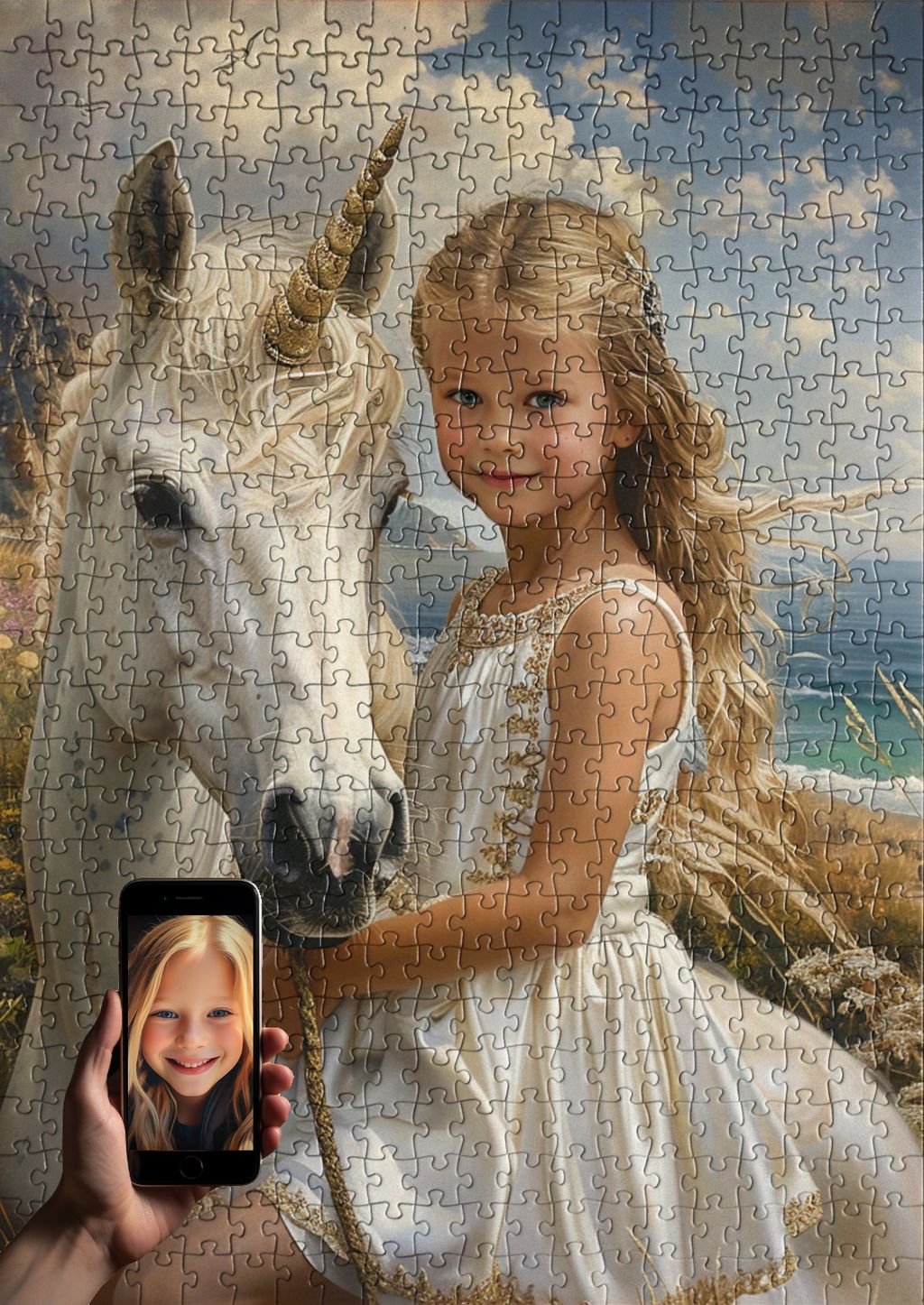
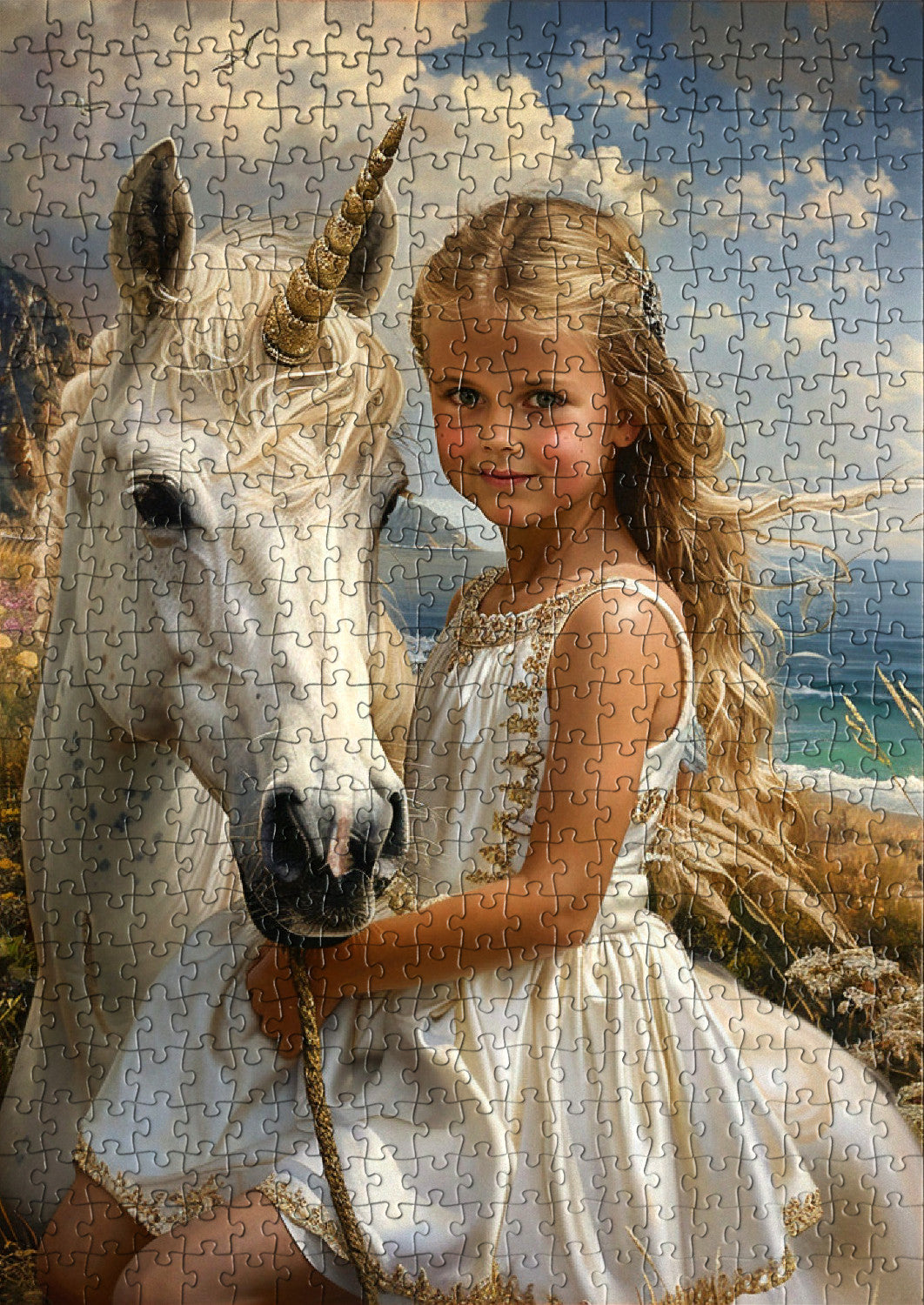
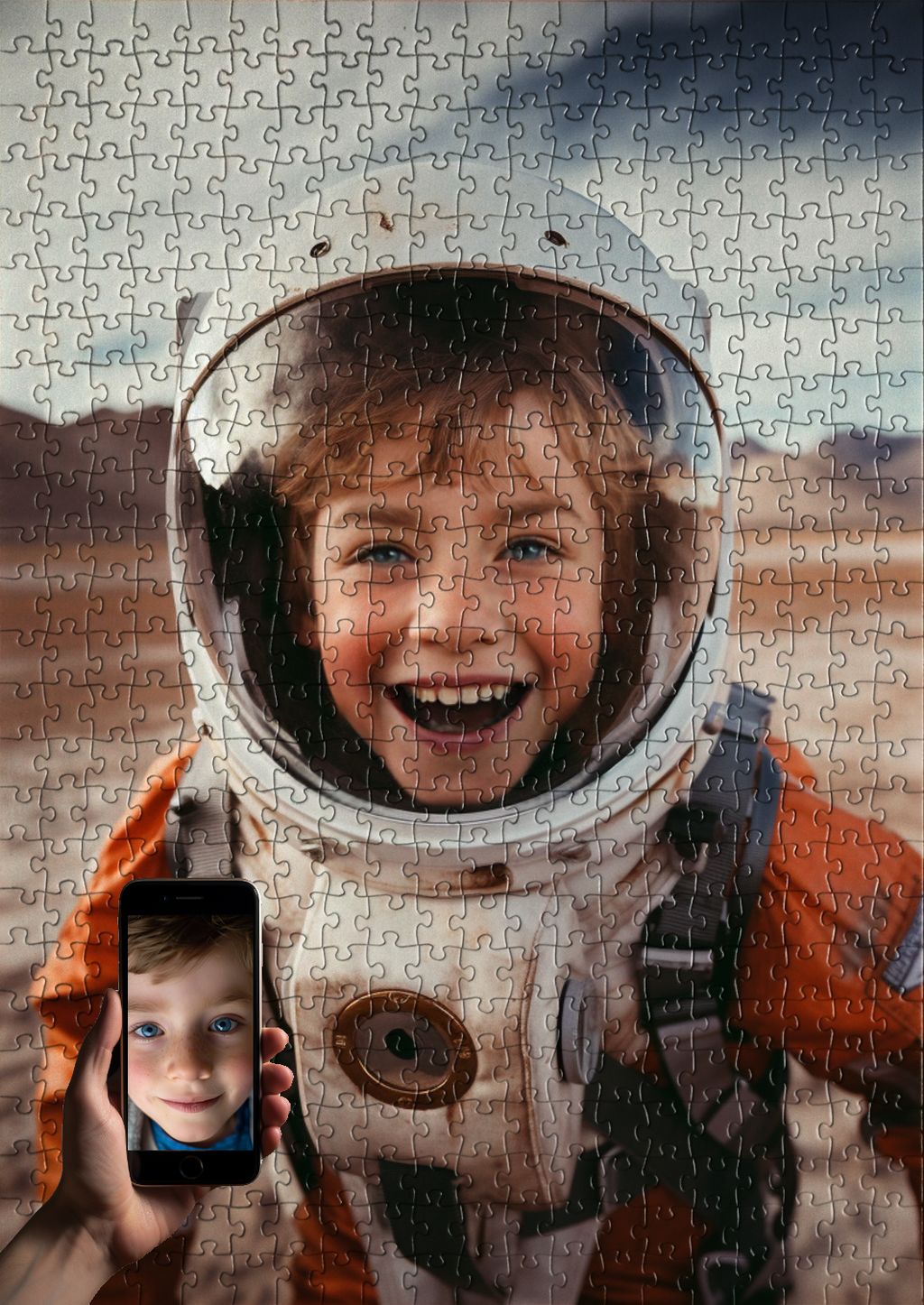



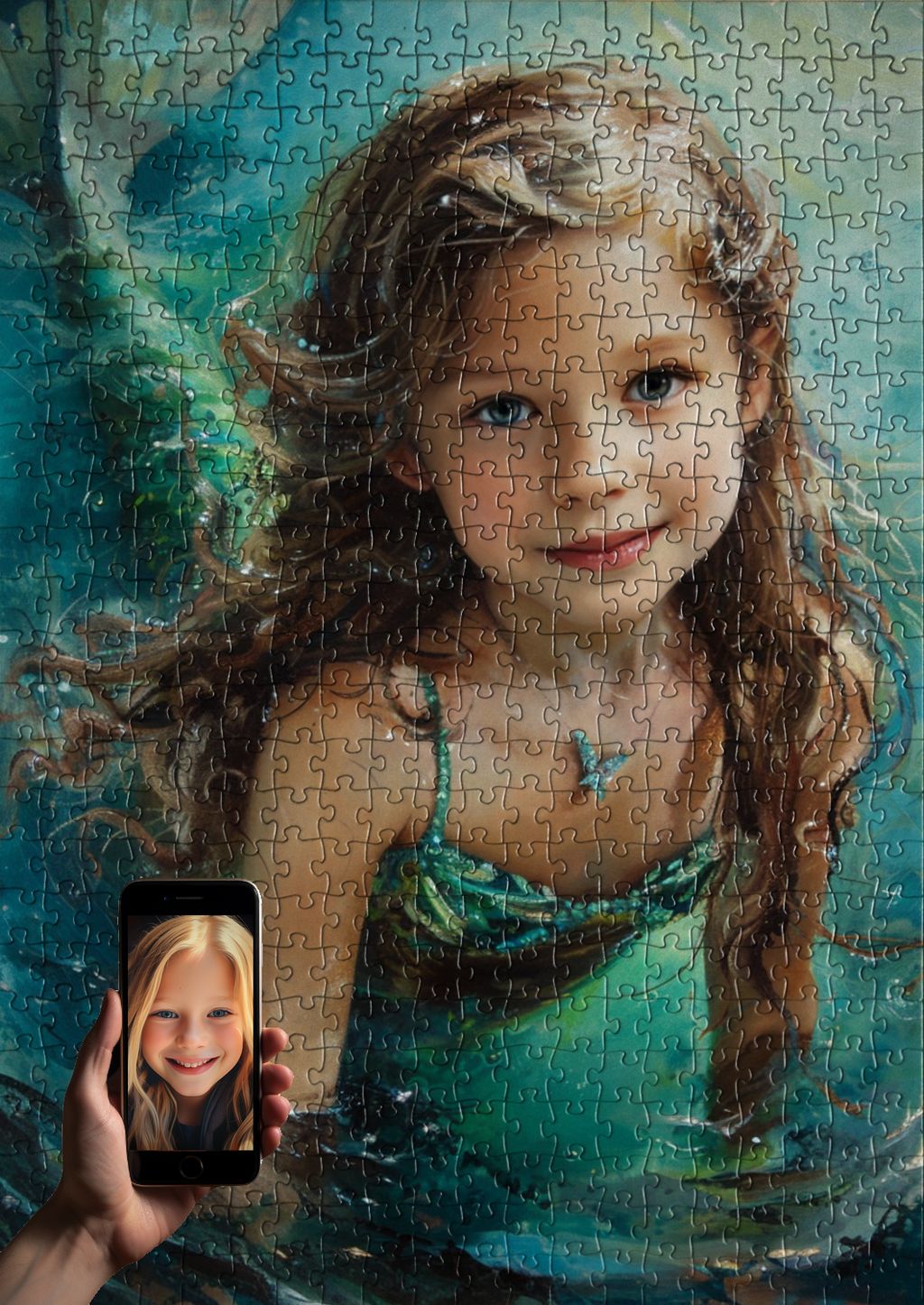

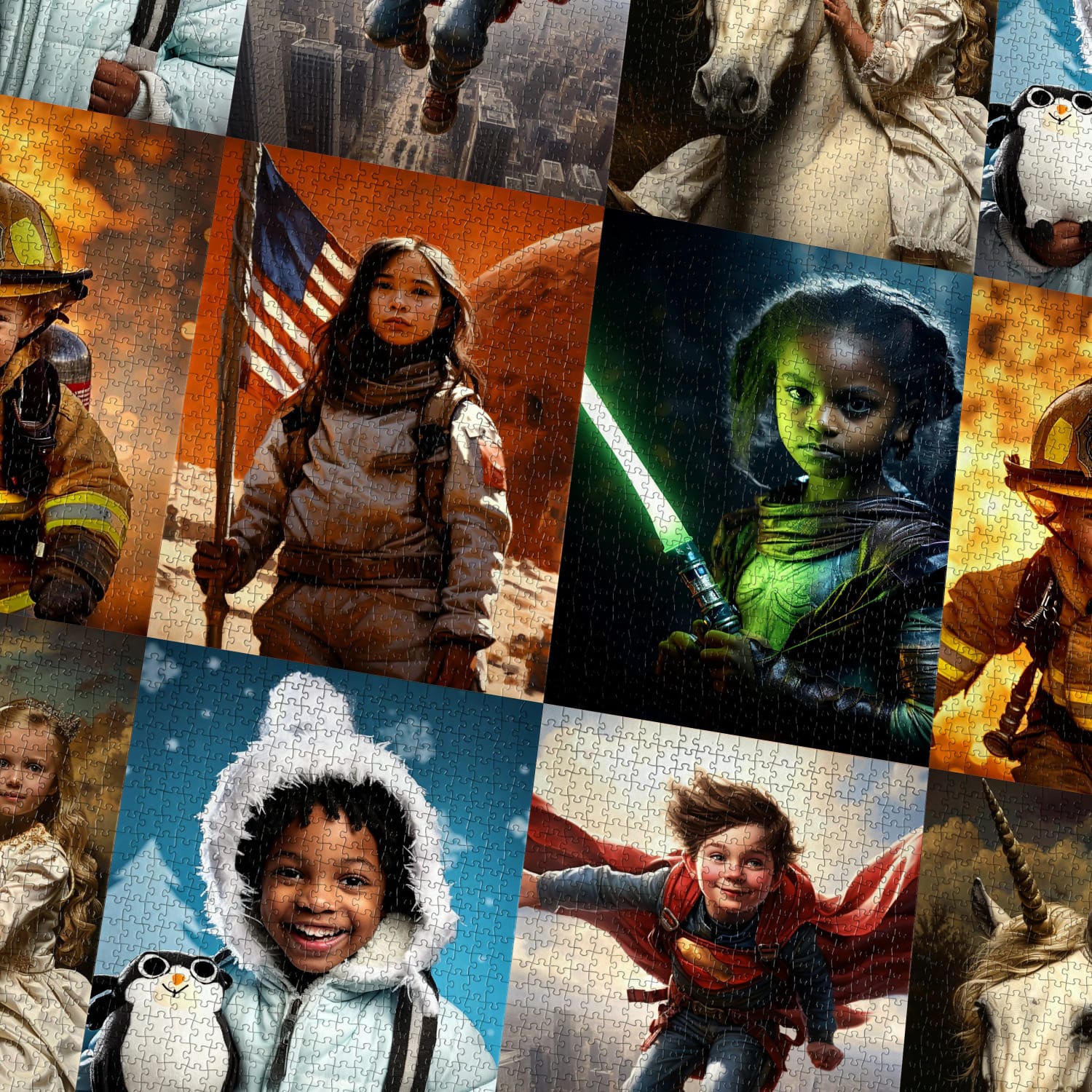
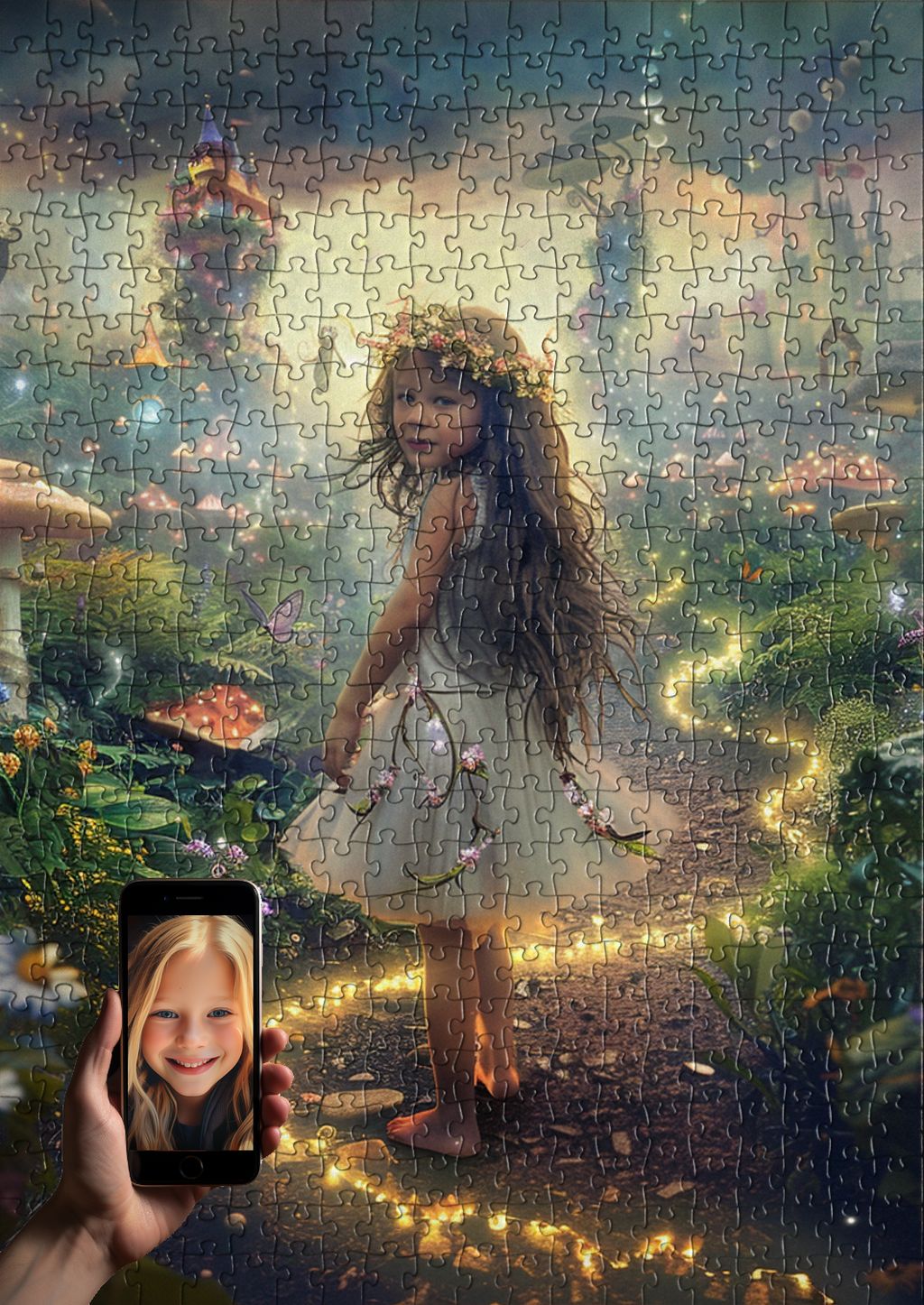
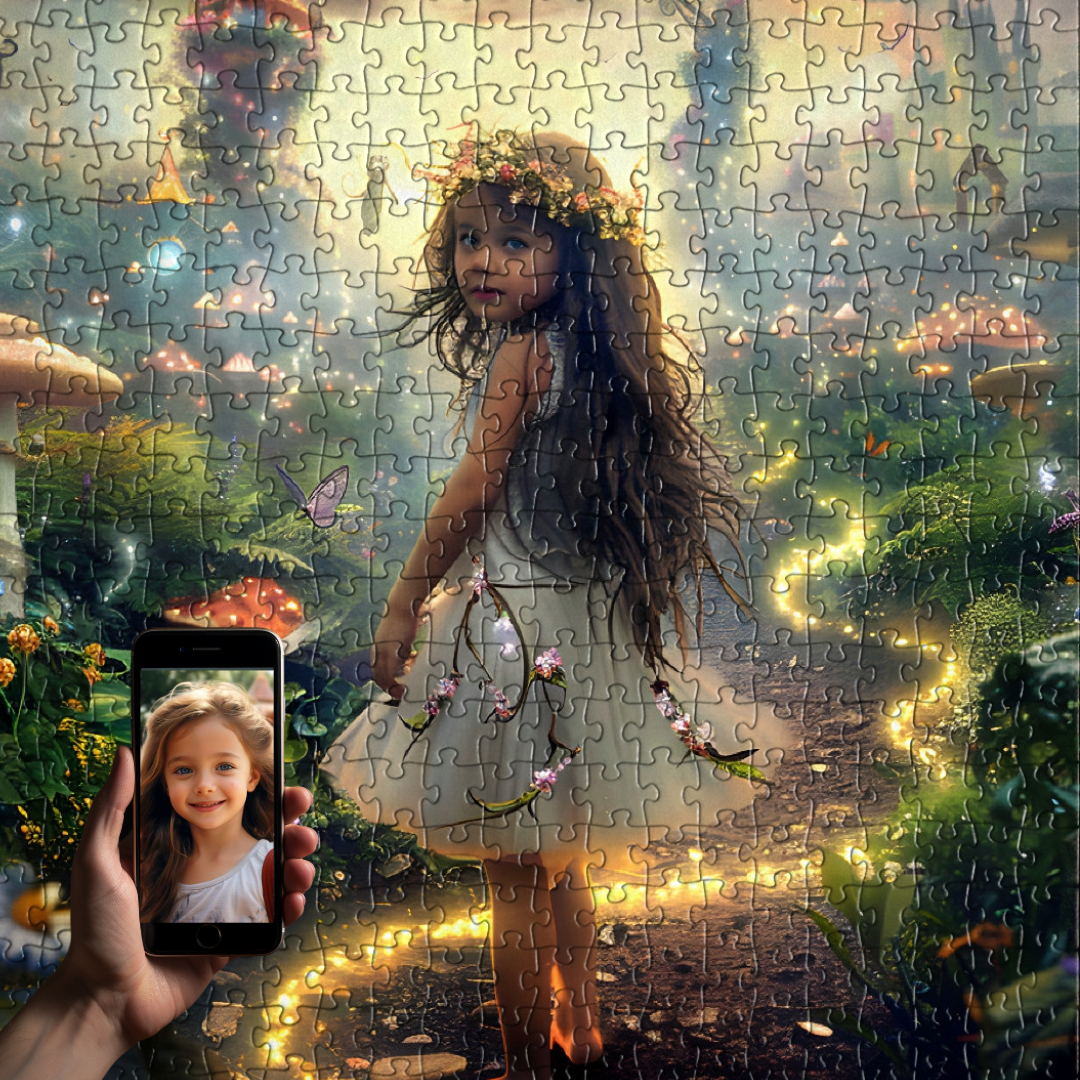
Share and get 15% off!
Simply share this product on one of the following social networks and you will unlock 15% off!